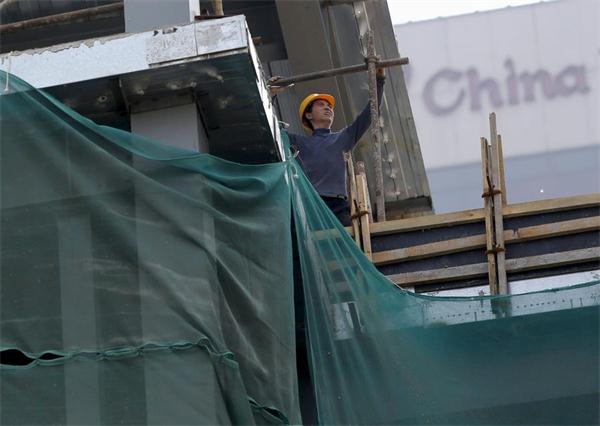Remedy for Beijing's ills
Updated: 2015-07-14 07:53
(China Daily)
|
|||||||||||
 |
|
A man works at a construction site at a financial district in Beijing, China, July 7, 2015. [Photo/Agencies] |
In a move to implement the national strategy of promoting the integration with neighboring Tianjin municipality and Hebei province, the Beijing government announced on Saturday that it will accelerate the construction of Tongzhou district as its "subsidiary administrative center" and relocate non-capital functions out of the densely populated city center.
At the two-day plenary session of its Party committee, Beijing's authorities vowed to address the city's chronic "urban woes", such as traffic congestion and air pollution by curbing its rapid population growth and moving some facilities to nearby regions in a bid to build Beijing into a livable capital.
Beijing has become a vibrant modern metropolis; however, traffic congestion and air pollution have worsened as its population has grown. At the same time, the "siphon effects" Beijing's booming development has produced have had an unfavorable influence on the development of the surrounding regions. The concentration of non-capital functions, such as the development of its general manufacturing, its status as a regional logistical hub, as well as its educational and medical resources, has contributed considerably to Beijing's development, but they have also made the city's development incompatible with its status as the national political and cultural capital.
To relocate non-capital functions to the Tongzhou district in an orderly manner will not only help the capital address the problems arising from the over-concentration of functions in the downtown area, it will also serve as a key step toward implementation of the national strategy aimed at promoting the integration of Beijing with Tianjin and Hebei.
The transfer of general functions to neighboring regions is not a simple industrial or environmental shift. Instead, it is an overall strategy to promote interactive and mutually complementary development with neighboring regions and address the urban problems caused by rapid population growth.
The above is an abridgement of a People's Daily article published on Monday.
Related Stories
Urban residents kick up a stink over exhaust fumes 2015-07-13 21:27
How to help Beijing reduce its urban woes 2015-07-09 08:02
Planned district better than urban sprawl 2015-07-05 14:43
'Sponge City' program set to soak up urban floodwater 2015-07-01 09:28
Today's Top News
China, Eurasian Economic Union to launch EPA talks: official
Agreement on Greece debt deal reached
Police evacuate 18 in Paris suburb store hold-up
China sees exports increase 2% in June, imports decline
Comedian's spoofs of Mulan stir debate
Lawyers held for 'trying to influence verdicts'
Top court official under inquiry for graft
Illegal immigrants are not refugees: Opinion
Hot Topics
Lunar probe , China growth forecasts, Emission rules get tougher, China seen through 'colored lens', International board,
Editor's Picks

|

|

|

|

|

|






